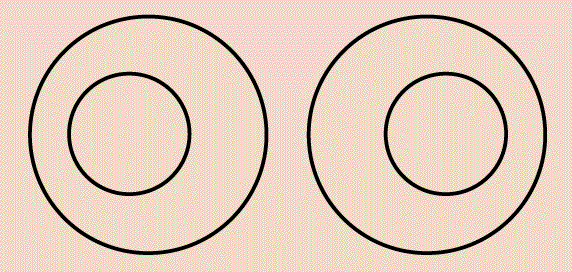Play all audios:
Access through your institution Buy or subscribe Recently, people have become fascinated by autostereograms, in which a three-dimensional scene emerges when the eyes misconverge on an
apparently random array of dots. We now have stereoscopic virtual reality and stereoscopic ‘vision’ in robots. But what are the brain mechanisms that are involved in stereopsis (binocular
vision)2? An advance in our understanding of these mechanisms comes from results by Cumming and Parker3 and by Masson _et al_. 4, on pages 280and , respectively, of this issue. When we look
at a small object, the images of it fall on corresponding points in the two retinas. Neural signals from these corresponding points then converge on the same ‘binocular cell’ in the primary
visual cortex (V1) of the brain5. As a result, the images fuse and we see one object. But if the images differ widely in shape, orientation or luminance contrast, they rival one another
rather than fuse. When similar images fall on slightly different retinal regions, we see one object standing out in depth (Fig. 1). This is the magic of stereoscopic vision. The simplest
idea is that optic-nerve fibres serving slightly different regions (receptive fields) in each of the two retinas converge onto the same binocular cell. Such a cell is a ‘disparity detector’,
because it responds best when the images in the two eyes have a disparity that matches the difference in the positions of the two receptive fields6. Different disparity detectors respond to
different signs and magnitudes of disparity. Zero-disparity detectors respond to objects in the plane of fixation, crossed-disparity detectors react to nearer objects, and
uncrossed-disparity detectors respond to more distant objects. This is a position-disparity mechanism. Disparities may also be detected by differences in the distribution of excitatory and
inhibitory regions within two receptive fields that do not differ in position. This is a phase-disparity mechanism. This is a preview of subscription content, access via your institution
ACCESS OPTIONS Access through your institution Subscribe to this journal Receive 51 print issues and online access $199.00 per year only $3.90 per issue Learn more Buy this article *
Purchase on SpringerLink * Instant access to full article PDF Buy now Prices may be subject to local taxes which are calculated during checkout ADDITIONAL ACCESS OPTIONS: * Log in * Learn
about institutional subscriptions * Read our FAQs * Contact customer support REFERENCES * Wheatstone, C. _Phil. Trans. R. Soc. Lond._ 128, 371–394 (1838). Google Scholar * Howard, I. P.
& Rogers, B. J. _Binocular_ _Vision_ _and_ _Stereopsis_ (Oxford Univ. Press, New York, 1995). * Cumming, B. G. & Parker, A. J. _Nature_ 389, 280–283 (1997). Article ADS CAS Google
Scholar * Masson, G. S., Busettini, C. & Miles, F. A. _Nature_ 389, 283–286 (1997). Article ADS CAS Google Scholar * Hubel, D. H. & Wiesel, T. N. _J. Physiol. Lond._ 160,
106–154 (1962). Google Scholar * Barlow, H. B., Blakemore, C. & Pettigrew, J. D. _J. Physiol. Lond._ 193, 327–342 (1967). Google Scholar * Qian, N. _Vision Res._ 37, 1811–1827 (1997).
Google Scholar * Ohzawa, I., DeAngelis, G. C. & Freeman, R. D. _J. Neurophysiol_. 77, 2879–2910 (1997). Google Scholar * Jones, R. _Am. J. Optom. Physiol. Opt_. 57, 640–644 (1980).
Google Scholar Download references AUTHOR INFORMATION AUTHORS AND AFFILIATIONS * the Centre for Vision Research, York University, North York, M3J 1P3, Ontario, Canada Ian P. Howard Authors
* Ian P. Howard View author publications You can also search for this author inPubMed Google Scholar RIGHTS AND PERMISSIONS Reprints and permissions ABOUT THIS ARTICLE CITE THIS ARTICLE
Howard, I. Seeing in reverse. _Nature_ 389, 235–237 (1997). https://doi.org/10.1038/38400 Download citation * Issue Date: 18 September 1997 * DOI: https://doi.org/10.1038/38400 SHARE THIS
ARTICLE Anyone you share the following link with will be able to read this content: Get shareable link Sorry, a shareable link is not currently available for this article. Copy to clipboard
Provided by the Springer Nature SharedIt content-sharing initiative

